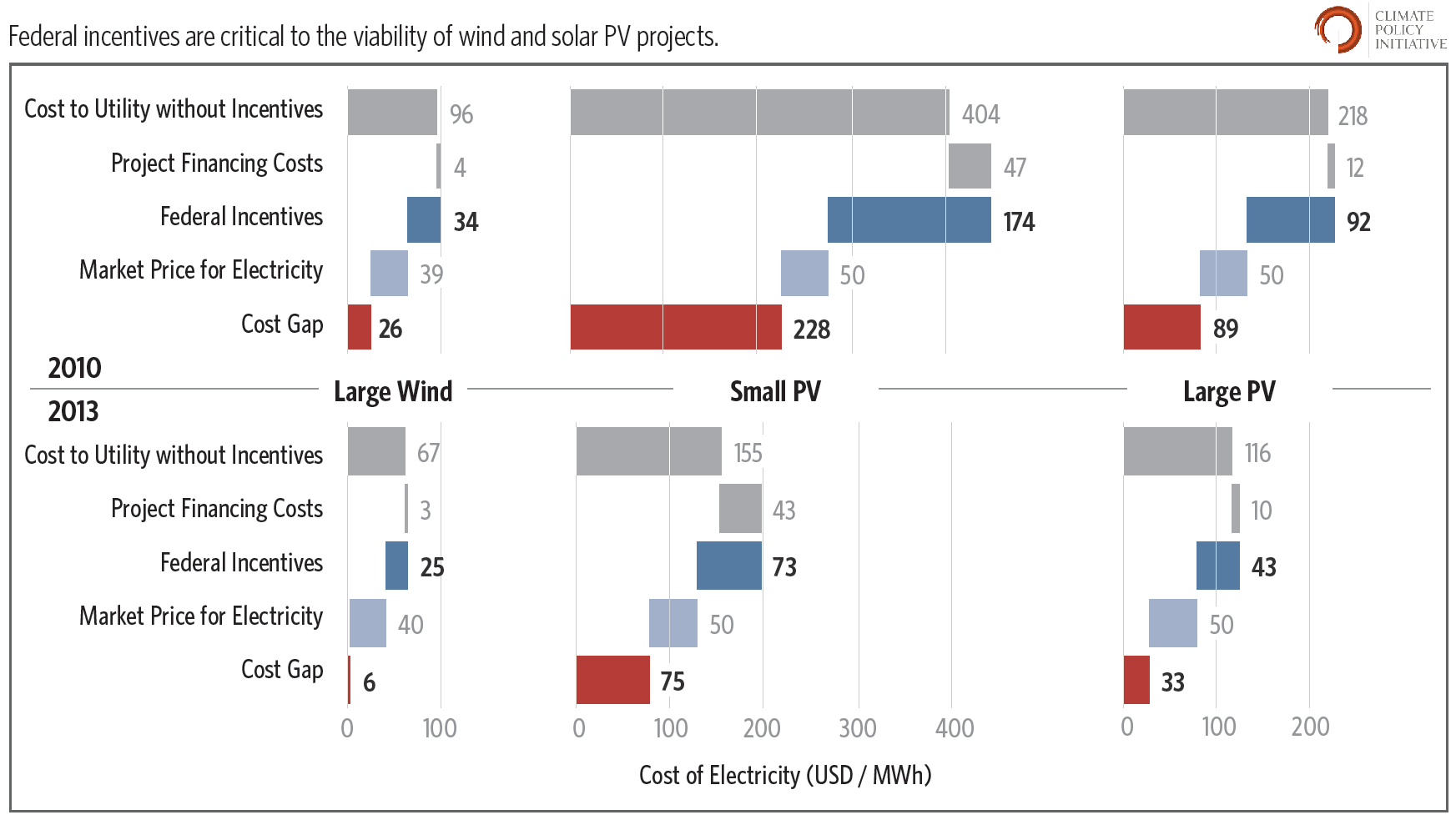Since 2008, U.S. workers have built enough solar and wind farms to power over six million homes with clean energy. This boom was financed primarily by tens of billions in private investment – substantial financial commitments which would not have been made in the midst of a deep financial crisis without strong, sustained policy supports at the state and federal level.
But were federal incentives really necessary and are they still needed moving forward, given recent reductions in solar and wind technology costs?
These questions are especially important in light of discussion around the production tax credit for wind, which is scheduled to expire at the end of this year.
Our recent work on the importance and cost-effectiveness of federal tax incentives addressed these issues. We found that:
Federal incentives were critical for renewable projects in 2010. With relatively low U.S. electricity market prices, most renewable projects built over the last four years would not have attracted investors without additional support from governments or ratepayers. Federal incentives covered more than half the gap between expected market prices for electricity from a large wind facility in 2010 ($39/MWh) and the cost of generating that electricity without incentives ($96/MWh). This was also true for utility scale solar photovoltaic facilities in 2010. The rest of the cost gap was covered either by ratepayer or state supports.
Though costs have fallen dramatically, a cost gap remains and federal incentives remain very important. Recent cost reductions and performance improvements have substantially improved the economics of new wind farms, but they would face a substantial cost gap if the production tax credit expired as scheduled at the end of this year.
On the other hand, if the production tax credit is extended, an average large wind project built in 2013 will be nearly cost-competitive with federal support alone. This means that wind could be viable in some regions without complementary state policies. As existing state policies can only drive limited growth, this could encourage significant additional deployment and avert a significant contraction of the renewable energy industry in the U.S.
Similarly, steep reductions in solar photovoltaic costs over the last two years mean solar projects will be more cost-competitive in 2013. However, a cost gap remains even with federal support. States must have good solar resources, higher than average electricity prices, or modest complementary policies to see substantial deployment.
So, from the point of view of a developer or investor in a wind or solar project, federal incentives remain critical for clean energy investment and deployment. Absent these incentives, projects are wholly dependent upon state policy. We’ll discuss how federal and state incentives worked together to enable the recent boom and the outlook for the next couple of years in a follow-up post.


